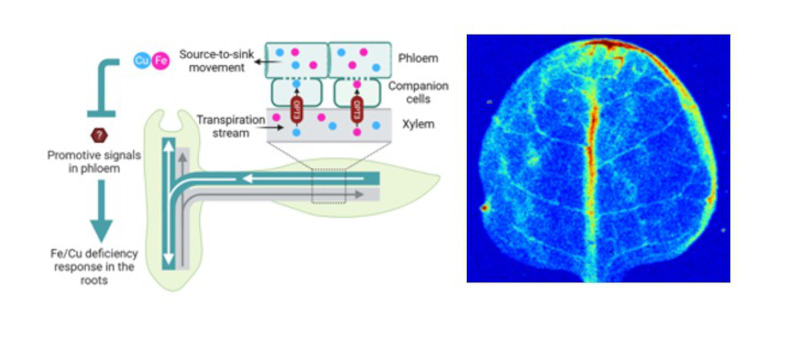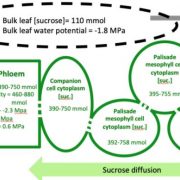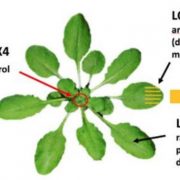The transporter OPT3 mediates crosstalk between iron and copper in shoot-to-root signaling
Chia et al. explore the mechanisms mediating systemic shoot-to-root signaling of copper status.
Ju-Chen Chia and Olena K. Vatamaniuk, Plant Biology Section, School of Integrative Plant Science, Cornell University
Background: The micronutrients copper (Cu) and iron (Fe) are essential for plant growth but can be toxic if cells over-accumulate them. Plants tightly regulate their root uptake systems to prevent deficiency while avoiding toxicity. This includes balancing Cu/Fe accumulation via Cu-Fe crosstalk and systemic shoot-to-root signaling through the phloem to report the shoots’ demand for these minerals. Arabidopsis thaliana OLIGOPEPTIDE TRANSPORTER 3 (OPT3) mediates shoot-to-root Fe signaling by loading Fe into the phloem companion cells to create a ‘Fe sufficiency’ signal for the roots. As a result of this function, loss of OPT3 leads to decreased Fe concentration in the phloem, constitutive upregulation of the root Fe uptake system, and overaccumulation of Fe in leaves.
Questions: We asked if, in addition to Fe, the systemic shoot-to-root signaling of Cu status exists and whether OPT3 functions in Cu signaling as well. We also asked if there is crosstalk between Fe and Cu in systemic shoot-to-root signaling.
Findings: We found that OPT3 transports Cu in heterologous systems, and the loss of OPT3 in Arabidopsis leads to a lower concentration of Cu in the phloem. This defect translates into the upregulation of the Cu uptake system in the roots even though the mature leaves are Cu sufficient. Applying Cu or Fe to the vasculature in the shoot using ‘phloem-feeding’ repressed Cu or Fe uptake, respectively, in the roots of the opt3 mutant. Surprisingly, we found that phloem feeding with Cu partially rescues the impaired root Fe signaling in the opt3 mutant and vice versa. This work highlights the complexity of Cu/Fe interactions and the role of AtOPT3 in the shoot in fine-tuning root transcriptional responses to the plant Cu and Fe demands.

OPT3 mediates Fe and Cu loading to phloem companion cells and shoot-to-root Cu and Fe status signaling.
Next steps: We are now interested in establishing the substrate specificity of OPT3 in planta, learning how Fe and Cu act in the phloem companion cells in shoot-to-root signaling and how the signal(s) propagates radially from the vasculature in the root towards root epidermal cells to regulate Fe and Cu uptake systems.
Reference:
Ju-Chen Chia, Jiapei Yan, Maryam Rahmati Ishka, Marta Marie Faulkner, Eli Simons, Rong Huang, Louisa Smieska, Arthur Woll, Ryan Tappero, Andrew Kiss, Chen Jiao, Zhangjun Fei, Leon V. Kochian, Elsbeth Walker, Miguel Piñeros, Olena K. Vatamaniuk (2023) Loss of OPT3 function decreases phloem copper levels and impairs crosstalk between copper and iron homeostasis and shoot-to-root signaling in Arabidopsis thaliana. https://doi.org/10.1093/plcell/koad053






